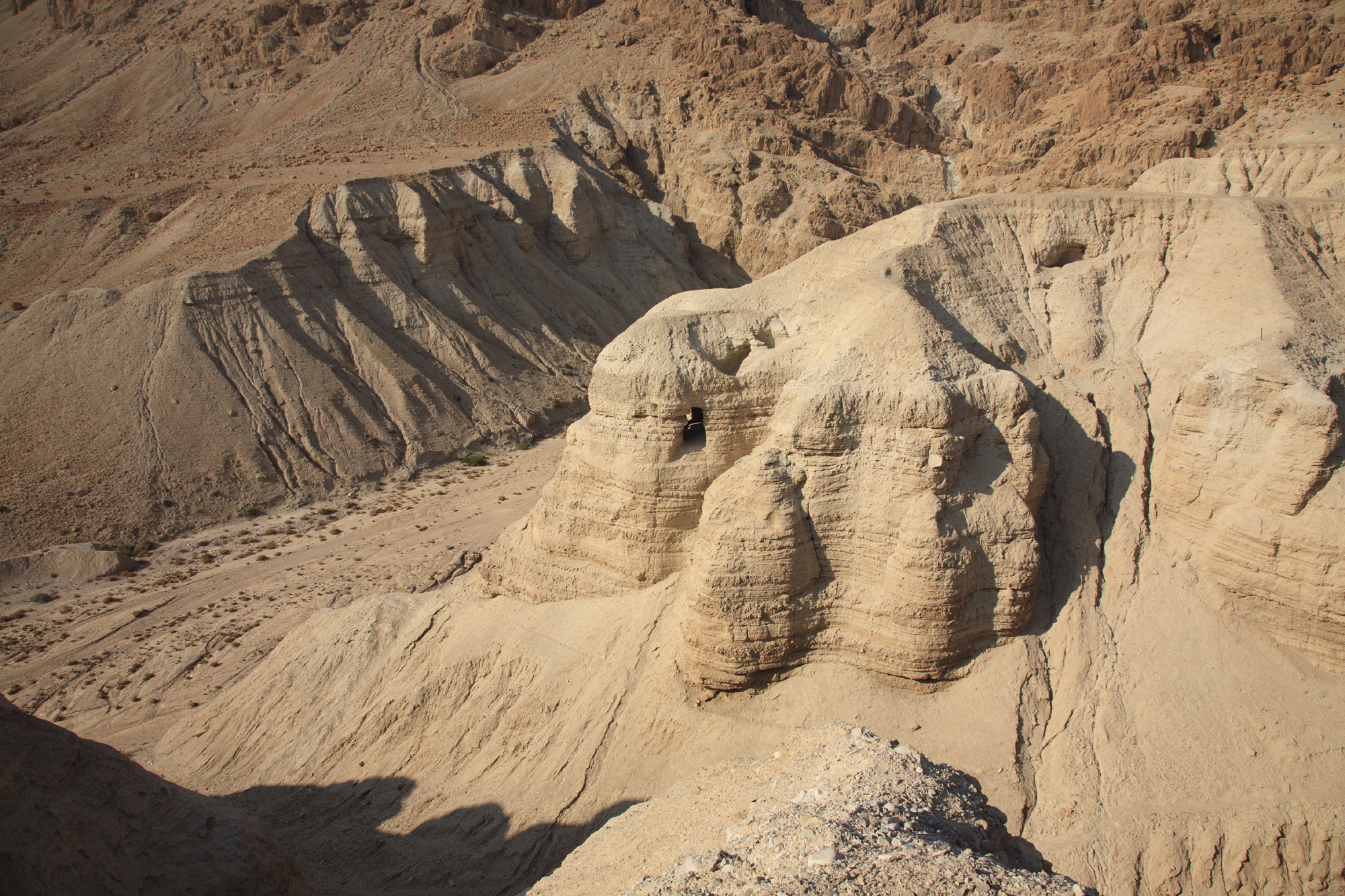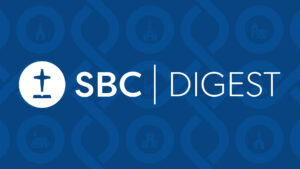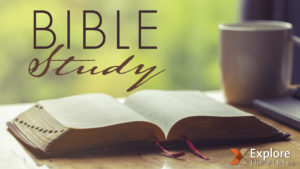
EDITOR’S NOTE: This story is part of a package previewing Southwestern Baptist Theological Seminary’s “Dead Sea Scrolls & the Bible” exhibit, which runs from July 2 to Jan. 13. For more information visit SeetheScrolls.com.
FORT WORTH, Texas (BP) — Type “Dead Sea Scrolls” into the search bar and Google presents 29 pages of images related to the ancient documents. Stick the 1998 animated film “The Prince of Egypt” into the DVD player and DreamWorks presents its rendition of Bible times in the Near East.
[QUOTE@right@200=In The Exhibit:
— Murals of Dead Sea region
— Artifacts such as coins, pottery and sandals
— Replica Wailing Wall
— Authentic Bedouin tent
— Tent from Qumran dig site
— Scroll stylus and ink well
— Replica of Cave 4
— Dead Sea Scroll fragments and other manuscripts
— Dead Sea Scrolls film
— iScroll kiosks
— Portion of St. John’s Bible
— Early Bibles and texts
— Gift shop
— Interactive dig site]For many Christians, the eastern lands where God spoke to Abraham, where God led the Israelites to freedom, and where Jesus was born, lived, died and rose again may just as well exist only in the events’ respective time periods. Hindered by vacation time, finances, or other responsibilities, millions of people cannot visit the desert surrounding the Dead Sea. For some, Google and DreamWorks may offer the closest access they may ever have to the lands the patriarchs crisscrossed by sandaled foot.
Southwestern Baptist Theological Seminary hopes to change that reality and give more people than ever a chance to see manuscripts that reveal the faithful transmission of the biblical texts over thousands of years through its Dead Sea Scrolls & the Bible exhibition, which will run from July 2012 to January 2013.
Organizers expect to see more than 400,000 people visit the exhibit during its six-month run at the seminary’s MacGorman Chapel and Performing Arts Center.
Weston Fields, guest curator for the Dead Sea Scrolls & the Bible exhibition and executive director of the Dead Sea Scrolls Foundation, said that while the ancient scroll fragments do not “prove” the Bible is true, they prove, more or less, that the Bible Christians use today, including 66 books from Genesis to Revelation, is the Bible God intended Christians to have, even thousands of years after He first inspired its writing.
“What I try to get people to understand is, there is a prior question to the ‘Is the Bible true?’ question, and that is, ‘Is what we have the Bible?'” Fields said. “The scrolls give us a 2,000-year-old snapshot of how the text of the Bible was in Jesus’ day. If there had been cameras, somebody could have stood next to Jesus, taken a picture of the Torah Scroll that He was holding up in the synagogue, put that picture in a vault somewhere for 2,000 years — nobody got a chance to see it, nobody could change it — and all of a sudden, you open up the vault 2,000 years later and say, ‘Look, here’s a picture of Jesus holding the scroll and look at the text.’
“Well, that’s what we have, except we don’t have a picture of Jesus; but we got the text that the Jews were using at the time. So what it does is it gives us confidence in the words of God that were transmitted down to us. Now it doesn’t answer the question, ‘Is the Bible true?’ because that is a matter of faith, but it does help you understand that what we have in the Old Testament was copied very faithfully, especially when you consider how bad human beings are at copying things faithfully.”
During the exhibit, people of all walks of life will have the chance to see, up close, manuscripts written more than 2,000 years ago, making them hundreds of years older than any manuscripts scholars previously had discovered.
Bruce McCoy, director of the Dead Sea Scrolls & the Bible exhibition, said the general public has every reason to make every effort to see the exhibit while Southwestern Seminary presents it in north Texas.
“It is an opportunity to see historic documents — fragments of Holy Scripture — that they would have to go to Israel to see,” McCoy said, adding that such fragments may not even be on display there if visitors did travel to Israel to see them. “I think people should come because of the high value, the fact that these are historic, they are rare, they are fragments of the oldest manuscripts of the Hebrew Old Testament known in the world today.”
Owning more Dead Sea Scroll fragments than any institution of higher education in North America, Southwestern plans to showcase seven of its fragments together with others on loan from the Kando family of Bethlehem, Hebrew University, and the Department of Antiquities of Jordan, for a total of 22 manuscript fragments in the exhibit.
The exhibit also will contain archaeological artifacts, early copies of Scripture, and equipment used in excavations, including the Jeselsohn Dead Sea Stone, or “Gabriel’s Vision”; the first published Greek New Testament; a page of the Gutenberg Bible; the Luther Bible; New Testament papyri; and tools from the excavation of Qumran, as well as a nearly 16-foot-long display of a portion of the St. John’s Bible.
In 1998, St. John’s University commissioned Donald Jackson, the unofficial calligrapher of the Queen of England, to create a handwritten, illuminated-text copy of the Bible. In 2011, Jackson completed the two-foot-tall, three-foot-wide, 1,100-page St. John’s Bible, in which he used 130-year-old Chinese ink; turkey, goose, and swan quills; and calfskin vellum.
“It is the equivalent for a calligrapher, of being asked to do the Sistine Chapel,” Jackson said in a video story online.
Southwestern’s exhibit will have St. John’s Bible excerpts from Genesis, Exodus, and Psalms.
“I think it’s going to be a show stopper,” McCoy said. “I think [visitors] will be seeing so many earth tones, and then all of a sudden, they’ll see these splashes of such beautiful artwork.”
During the exhibition, the seminary’s Leta Phillips Library will feature a 10-volume collection of antiquarian texts on loan from The Rawlings Foundation in Florence, Ky. The collection contains 16th- and 17th-century books such as first editions of the 1611 King James Bible, 1563 Foxe’s Book of Martyrs, and 1516 Erasmus Greek New Testament, as well as a 1616 royal copy of the King James Bible formerly belonging to King James I.
In addition to walking through a replica of Cave 4, where Bedouin herders found two of the scroll fragments on loan for the exhibit from Hebrew University, visitors will have the chance to watch a short film about the scrolls, see a replica of the Wailing Wall, and examine digitized scrolls at their own pace on iScroll kiosks. Visitors can also browse through a gift shop and purchase souvenirs before leaving the exhibit.
McCoy said the exhibition will offer a child-friendly component as well, where young visitors can experience the archaeological aspects of the Dead Sea Scrolls and learn about them alongside their parents, both through kiosks placed throughout the exhibit and through a simulated dig site located outside the exhibit hall.
At the dig site, visitors will have the chance to excavate and dig for ancient artifacts. A child may then take home a shard discovered in his digging.
Southwestern alumnus and current Ph.D. student Trey Thames will set up the dig site for the exhibit. Thames first created a simulated dig site after traveling to Tel Gezer Israel with Southwestern and deciding he wanted to create an opportunity for his students at Woodlands Christian Academy in Woodlands, Texas, to learn about archaeology in a hands-on way.
“He has drawings and plans to make this a destination point for the adventurous mind,” McCoy said. “Trey is going to construct a smaller version of what archaeologists found near the Dead Sea. Then, he is going to bury it with dirt.”
A lecture series will punctuate the exhibit during its duration, as well, offering evening presentations from international historians, linguists and scholars, who will further illuminate the study of the scrolls and their impact on modern civilization. The lectures will take place on Tuesday evenings throughout the six-month exhibit.
McCoy said the exhibit is a once-in-a-lifetime opportunity.
“This is the most comprehensive exhibition on the Dead Sea Scrolls ever in Texas,” McCoy said. “We’re bringing the ancient Near East to them. They can come and do this without a passport.”
Visitors, however, should remember to bring a few items such as a photo ID to pick up tickets and a light jacket to wear in the exhibit hall. For the preservation of the ancient documents and artifacts, the temperature will be kept between 68 and 70 degrees inside the building.
Visitors can find a list of items not to bring at seethescrolls.com, along with information about tickets, hours of operation, and location. The website also includes educational resources such as games, maps, articles and websites.
The proceeds of the exhibit — for which active duty military receive free admission — will benefit Southwestern Seminary’s Biblical Archaeology Program. McCoy hopes that when visitors experience how people 2,000 years ago diligently and faithfully copied the Scriptures, they will feel inspired to appreciate the modern copy of God’s Word and the value ancient cultures recognized in it.
“I hope they will leave with a renewed hunger to read the Bible,” McCoy said. “These folks were in caves transcribing the Scriptures, and we can lean back in our easy chair and read the Word anytime we wish. I hope that we would develop a renewed discipline and hunger for the truth of God’s Word, to read it and apply it to our lives.”
–30–
Sharayah Colter writes for Southwestern Seminary. This story first appeared in the Spring 2012 issue of Southwestern News magazine on the Dead Sea Scrolls, online at https://www.swbts.edu/southwesternnews/SNSP12.cfm.















